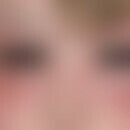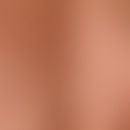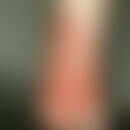Synonym(s)
Alternaria mycosis; Alternariosis of the skin; Cutaneous alternariosis; Cutaneous Alternariosis; Mould granuloma
DefinitionThis section has been translated automatically.
Very rare, clinically multiform secondary mycosis caused by Alternaria species in the case of underlying, severe disturbance affecting the entire organism (long-term immunosuppression).
PathogenThis section has been translated automatically.
Opportunistic, weakly pathogenic molds of the genus Alternaria, especially Alternaria alternata, A. chartarum, A. tenuissima. Alternaria spp. are ubiquitously distributed (clustered on walls, on food, in the soil), saprophytic spore- and toxin-forming organisms, which are counted among the black fungus.
You might also be interested in
Occurrence/EpidemiologyThis section has been translated automatically.
However, it is rare worldwide; only 210 cases of human alternariasis were described worldwide between 1933 and 2008.
EtiopathogenesisThis section has been translated automatically.
- Endogenous form: infection by inhalation of spores and hematogenic spread from the lungs to the skin.
- Exogenous form: Local traumatic germ inoculation (e.g. by contaminated foreign bodies (e.g. wood splinters, spines) with clinical manifestations often years after injury or colonisation of the mycete on previously damaged (e.g. traumatically or steroid-treated) skin.
- More frequent in patients with immunological disorders ( Cushing's syndrome), systemic glucocorticoid therapy, HIV infection or after organ transplantation; less frequent in malignant lymphomas.
- It is not uncommon for infections caused by Alternaria species to be overlaid or complicated by type I sensitization. In this respect this must be taken into account (see below).
LocalizationThis section has been translated automatically.
- Endogenous form: Mostly numerous, disseminated foci, which can occur ubiquitously on the integument.
- Exogenous form: Mostly solitary, especially on arms and legs, face.
ClinicThis section has been translated automatically.
Pronounced dermatotrophy. Roughly infiltrated, little inflammatory, 1-3 cm Ø large, chronically vegetating reddish-brown foci with mostly verrucous or encrusted surface, reminiscent of foreign body granulomas. Partially sporotrichoid aspects. Ulceration possible. Often eczematous overlay.
HistologyThis section has been translated automatically.
Diffuse, granulomatous dermatitis with epithelioid cell granulomas, giant cells, neutrophilic microabscesses and detection (PAS stain or Grocott stain) of spores and hyphae Culture (Sabouraud-4%-glucose agar, 10 days at 26 °C): Initially fluffy white, later black-green colonies. Molecular genetic specification possible in special laboratories.
DiagnosisThis section has been translated automatically.
Clinic, histology, mycological and cultural evidence.
General therapyThis section has been translated automatically.
If possible treatment of the underlying disease. Otherwise, surgical removal of the flock should be attempted.
Internal therapyThis section has been translated automatically.
- Successes under therapy with itraconazole (e.g. Sempera) (2 times/day 200 mg p.o. for 3 months) were reported (after response the dose was reduced to 100 mg/day p.o.).
- Very good response to liposomal amphotericin B (e.g. AmBisome) initial 1 mg/kg bw i.v. over 6 weeks; if necessary, increase gradually to 3 mg/kg bw i.v.
Progression/forecastThis section has been translated automatically.
Spontaneous remissions possible with normal immune function.
Note(s)This section has been translated automatically.
Classification and molecular biological classification of common mould allergens modified according to "WHO/IUIS, Allergen Nomenclature Sub-committee".
Alternaria
- Alt a 1
- Alt a 3 Heat shock protein
- Alt a 4 Disulfide isomerase
- Alt a 5 Ribosomal protein P2
- Alt a 6 Enolase
- Alt a 7 YCP4 protein
- Alt a 8 Mannitol dehydrogenase
- Alt a 10 Aldehydes dehydrogenase
- Alt a 12 Acid ribosomal protein
- Alt a 13 Glutathione S-transferase
- Alt a 14 Manganese superoxide dismutase
- Alt a 15 Serine protease
Case report(s)This section has been translated automatically.
Case1:
- Medical history and findings: 72-year-old kidney transplant patient under long-term immunosuppressive therapy (azathioprine 150 mg/day, prednisolone 7.5 mg/day). Within 6-8 weeks after a banal injury, painless nodular, reddish-brown, scaly, sometimes warty plaque on the knee, last measuring about 3 x 2 cm. Primary diagnosis: Granuloma anulare.
- Histology: Diffuse, granulomatous dermatitis with epithelioid cell granulomas, giant cells, neutrophilic microabscesses. PAS staining: detection of mycelia; in the Grocott stain, detection of short, septated mycelia. On Kimmig agar a fast growing culture was detectable after 5 days at 30 °C (see below). Morphological and genetically verified diagnosis: Alternaria alternata.
- Therapy: Itraconazole 200 mg/day for 8 weeks, combined with topical application of Ciclopiroxolamine occlusively. After four months: complete healing.
- In a 60-year-old female patient, grouped red papules on the right wrist and the left heel region have shown little symptomatic since ½ year. Z.n. liver-TX due to advanced liver cirrhosis Child C ethyltoxic etiology with subacute liver failure. Currently an immunosuppressive medication (since 2008): Tacrolimus 2x5 mg and mycophenolic acid 2x360 mg/day was administered.
- Mycology: The microbiological analysis of a skin biopsy of the right foot showed a positive fungal PCR detection with the following sequencing result of Lewia infectoria. From scales from the right hand conventional mycological alternaria species could be detected in culture.
- Histology: In the upper dermis detection of granulomatous infiltrates with intracellular PAS- and Grocott-positive fungal elements.
- Therapy: Fluconazol 100 mg 2 x/day p.o.
- Course: Gradual regression of the papules within 3 months.
LiteratureThis section has been translated automatically.
- Acland KM (1998) Cutaneous infection with Alternaria alternata complicating immunosuppression: successful treatment with itraconazol. Br J Dermatol 138: 354-356
- Alhmali N et al (2011) Cutaneous alternariosis in drug-induced immunosuppression after liver transplantation. Abstract CD 46th DDG meeting, DK02/06.1
- Altmeyer P, Schon K (1981) Cutaneous mold granulomas caused by Ulocladium chartarum. dermatologist 32: 36-38
- Baykal C et al (2000) Simultaneous cutaneous and ungual alternariosis in a renal transplant recipient. Br J Dermatol 143: 910-912
- Benito N et al (2001) Alternariosis after liver transplantation. Transplantation 72: 1840-1843
- Courville P et al (2002) Co-existent cutaneous cryptococcosis of the forearm and cutaneous alternariosis of the leg in patient with metastatic thymoma. J Cutan catheter 29: 55-58
- Lyke KE et al (2001) A case of cutaneous ulcerative alternariosis: rare association with diabetes mellitus and unusual failure of itraconazole treatment. Clin Infect Dis 32: 1178-1187
- Kim JO et al (2003) Cutaneous alternariosis in a renal transplant recipient. Int J Dermatol 42: 630-631
- Machet L et al (2000) Effectiveness of terbinafine in cutaneous alternariosis. Br J Dermatol 143: 1115-1116
- Mayser P et al (2004) Cutaneous alternariosis. Diagnostics, clinic and therapy. Dermatologist 55: 1137-1142
- Merino E et al (2003) Relapsing cutaneous alternariosis in a kidney transplant recipient cured with liposomal amphotericin B. Eur J Clin Microbiol Infect Dis 22: 51-53
- Noack-Wiemers F et al (2003) Indolente erythematous cutaneous-subcutaneous nodules after combined kidney and pancreas transplantation. dermatologist 54: 354-357
- Pereiro M Jr et al (2001) Alternariosis refractory to itraconazole in a patient suffering from bullous pemphigoid. Dermatology 202: 268-270
Incoming links (6)
Alternaria mycosis; Alternariol; Lung diseases, skin changes; Mould diseases; Organ transplants, skin changes; Pheohyphomycosis;Outgoing links (8)
Amphotericin b, liposomal; Cushing's syndrome (overview); Eczema (overview); Hiv infection; Itraconazole; Moulds; Mycetes; Organ transplants, skin changes;Disclaimer
Please ask your physician for a reliable diagnosis. This website is only meant as a reference.







